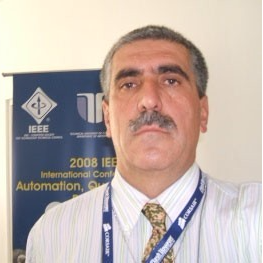Experimental and Modeling Methods, and Novel Applications of Electromagnetic Energy
A special issue of Energies (ISSN 1996-1073). This special issue belongs to the section "F: Electrical Engineering".
Deadline for manuscript submissions: 25 July 2024 | Viewed by 5135
Special Issue Editors
Interests: electrical engineering; power system analysis; modeling and simulation; electrical load management; energy efficiency; reneweable energy; data acquisition systems; distribution system analysis and optimisation; power quality
Special Issues, Collections and Topics in MDPI journals
Interests: electromagnetic field analysis, modeling and simulation; measurement methods; evaluation of ferromagnetic material characteristics; numerical methods; electrical circuit analysis and simulation; renewable energy sources; power system
Interests: electromagnetic field analysis, modeling and simulation; electromagnetic forces and energy; defectoscopy; numerical methods in electrical engineering; electrical circuit; power systems; cybersecurity
Special Issue Information
Dear Colleagues,
Electromagnetism is a vast domain that is naturally linked to most fields within physics and engineering. This is because electric and magnetic energy are amongst the primary properties of all elementary particles. All these make electromagnetism a universal phenomenon of nature. Electromagnetic energy is found everywhere, from the atomic micro-universe to the immeasurable cosmos. The complex atomic structure of various substances—consisting of an enormous number of atoms—leads to a virtually inexhaustible variety of their electromagnetic properties. The reciprocal connection between electric and magnetic phenomena allows us to use the study of material properties to determine the internal structure of both micro-particles and bodies of macroscopic dimensions. The universal nature of electromagnetism explains its wide range of uses in industry. First, based on the study of the material properties and electromagnetic energy of a substance, technical electric and magnetic materials can be created. These materials are crucial in all modern power energy systems: in electrical engineering, radio engineering, medicine, communication systems, wireless devices, and other branches of modern technology. Secondly, using the informational aspect of electromagnetic energy and by measuring material characteristics, detailed information about other physical properties of bodies can be acquired. This is useful especially for those bodies that are difficult to access by direct investigation. The information given by the electromagnetic energy measurements is the basis of methods widely used in technology, such as electro-magneto-structural analysis and non-destructive procedures—the most important methods for the quality control of industrial production.
This Special Issue aims to present and disseminate the most recent advances related to the analysis, modelling, application, and experimental methods of electromagnetic energy.
Topics of interest for publication include, but are not limited to:
- The measurement, instrumentation and sensors of electromagnetic energy;
- Power systems and electromagnetic energy;
- Electromagnetic energy and material properties ;
- Electromagnetic energy transmission and reception;
- Advanced modeling approaches using electromagnetic energy;
- Novel applications of electromagnetic energy and forces;
- Non-destructive technologies in defectoscopy based on electromagnetic energy;
- Modern electromagnetic devices;
- Experimental methods of electromagnetic energy;
- Novel applications of electromagnetic waves.
Dr. Horia Andrei
Dr. Paul Andrei
Dr. Marilena Stanculescu
Guest Editors
Manuscript Submission Information
Manuscripts should be submitted online at www.mdpi.com by registering and logging in to this website. Once you are registered, click here to go to the submission form. Manuscripts can be submitted until the deadline. All submissions that pass pre-check are peer-reviewed. Accepted papers will be published continuously in the journal (as soon as accepted) and will be listed together on the special issue website. Research articles, review articles as well as short communications are invited. For planned papers, a title and short abstract (about 100 words) can be sent to the Editorial Office for announcement on this website.
Submitted manuscripts should not have been published previously, nor be under consideration for publication elsewhere (except conference proceedings papers). All manuscripts are thoroughly refereed through a single-blind peer-review process. A guide for authors and other relevant information for submission of manuscripts is available on the Instructions for Authors page. Energies is an international peer-reviewed open access semimonthly journal published by MDPI.
Please visit the Instructions for Authors page before submitting a manuscript. The Article Processing Charge (APC) for publication in this open access journal is 2600 CHF (Swiss Francs). Submitted papers should be well formatted and use good English. Authors may use MDPI's English editing service prior to publication or during author revisions.
Keywords
- electromagnetic energy
- analysis and modeling
- electromagnetic properties of materials
- experimental methods
- modern electromagnetic devices
- non-destructive electromagnetic technology
- novel applications of electromagnetic energy
- transmission and reception
- electromagnetic waves






